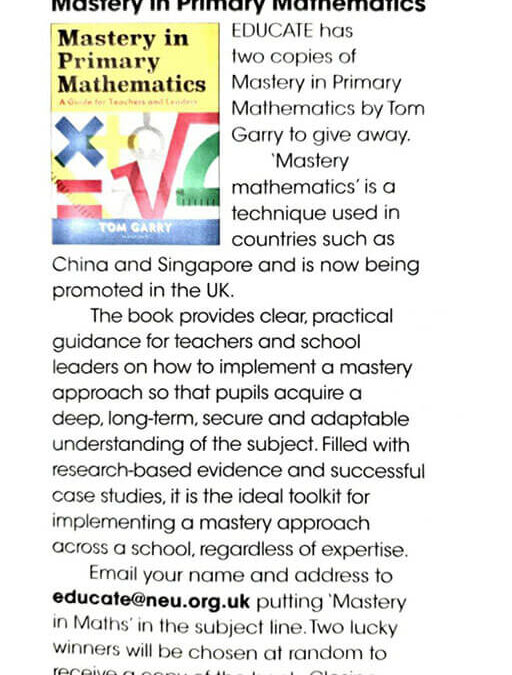
by Helen Kenworthy | Jul 23, 2024 | Mastery
School hallways can feel like a tunnel vision of classes and textbooks sometimes. But wait! There’s a whole world waiting to explode your high school experience with color, energy, and endless possibilities – the world of extracurricular activities!
Beyond the Classroom: Why You Should Join the Club
Extracurricular activities aren’t just a way to fill up your free time (although they can definitely do that in the most awesome way). They offer a treasure trove of benefits that will make you a more well-rounded, confident, and prepared individual for the future. Here are just a few reasons to jump on board:
- Discover Hidden Passions: Ever wondered if you have a secret talent for coding or a hidden knack for debate? Extracurricular activities expose you to a wide range of interests you might not have explored otherwise. Who knows, you might discover a lifelong passion that sets you on an exciting new path!
- Friendship Fiesta: Say hello to your new squad! Clubs and activities create a space where you can connect with like-minded peers who share your interests. These friendships can become a source of support, encouragement, and a whole lot of fun.
- Level Up Your Skills: Whether it’s honing your leadership abilities in student government or mastering a musical instrument in band, extracurriculars provide a platform to develop valuable skills that go beyond textbook learning. These skills will impress colleges and future employers alike.
- Boost Your Resume (and College Applications): Colleges love to see well-rounded students! Participating in extracurricular activities demonstrates commitment, initiative, and a willingness to explore new things. It’s a surefire way to make your application stand out.
- Build Confidence and Self-Esteem: Stepping outside your comfort zone and achieving something new in a club or activity is a powerful confidence booster. It helps you discover your strengths, develop your voice, and learn to overcome challenges.
- It’s Just Fun! Let’s not forget the most important reason – extracurricular activities are a blast! They’re a chance to unwind after school, explore your creativity, and have some unforgettable experiences with friends.
Finding Your Perfect Fit: How to Choose an Extracurricular Activity
With so many options, from robotics club to drama club to the debate team, how do you find the “right” extracurricular activity? Here are some tips:
- Think about your interests: What are you passionate about? Do you love tinkering with electronics or writing stories? Look for clubs that align with your natural interests.
- Don’t be afraid to try something new! Step outside your comfort zone and explore an activity you’ve always been curious about. You might discover a hidden talent!
- Talk to friends and classmates: See what activities they’re involved in and if there’s anything they recommend.
- Attend club fairs or information sessions: These are a great way to learn about different clubs, meet their members, and see if the vibe resonates with you.
- Consider your schedule: Make sure you can realistically commit to the time demands of an extracurricular activity without overwhelming yourself.
The Takeaway:
Extracurricular activities are an essential ingredient for a fulfilling high school experience. They open doors to new skills, friendships, and self-discovery. So, don’t be afraid to step outside your comfort zone and dive into the incredible world of clubs and activities. You might just surprise yourself with how much you enjoy it (and how much it helps you grow)!

by Helen Kenworthy | Oct 28, 2022 | Education, Mastery
Contrary to popular assumption, reading is more than just reciting the words on a page. It’s much more than that.
Learning to read is one of the most crucial abilities that children may acquire. When your kid makes their initial steps toward learning to read, bear in mind the five key components of reading that every child requires in order to grow into a confident and fluent reader.
Phonemic awareness, phonics, fluency, vocabulary, and comprehension are the five key components of reading. Each element of literacy is equally vital in reading and should be explicitly taught. Let us discuss this in further detail:
- Phonemic awareness
When training youngsters to read, the first stage is to master phonemic awareness. When a learner can hear, identify, and manipulate sounds without looking at the actual letters or words, they have mastered this skill. You can concentrate on phonemic awareness activities such as rhyming, blending sounds (phonemes) to form words, deleting or adding sounds to create new words, substituting sounds to form new words, recognizing when spoken words begin or end with the same sound, segmenting words into sounds, isolating sounds, and segmenting or blending syllables because they are done orally. There is so much that can be done before young readers are introduced to print.
2. Phonics
This is the technique of mapping the sounds in words to written letters. It is one of the first reading abilities that children should learn because it introduces them to the alphabetic principle, which connects letters and sounds.
A lack of phonics training in early childhood can result in reading difficulties later in life. It is critical that children understand that printed text represents the sounds of spoken speech. There are many phonics exercises you can perform at home with your child to help them build early phonics skills, but it’s vital to remember that these activities should always be supplemented by regular reading.
3. Fluency
Fluency is defined as the capacity to “read like you talk.” This means you can read correctly, effortlessly, and expressively. A good reader should not have to pause to decode words. Fluency is essential in reading because it connects word recognition and understanding. Reading fluently allows kids to concentrate on what the words are saying rather than attempting to figure out what the words are. Being a fluent reader is not something that all children are born with. This can require a lot of practice at times. How can you assist in the development of fluency? You can model good fluency with prosody in your lessons, read-aloud, and small groups as a teacher.
Students can also reread books to improve their fluency. Books on tape are another excellent resource that could be utilized. If you have spent a significant amount of time working on fluency intervention and your kid is still not making adequate reading progress, I recommend revisiting phonemic awareness and phonics skills again to ensure that they are properly grasped.
4. Comprehension
I’ve always advised my young readers that you should first learn to read, then read to learn. This remark is extremely accurate since understanding the material is your ultimate goal as a reader. Students must be able to read, interpret, process, analyze, and retain what they have just read in order to be proficient in this area. Understanding is important not only in the academic realm but also in our personal and professional lives. These abilities are what keep our children reading for a lifetime since they can actually enjoy books and follow along with their favorite stories. Comprehension is long-term, and it is a vital part of reading.
5. Vocabulary
Every child approaches reading with a distinct set of abilities. The broader a child’s speaking and listening vocabulary, the more words they will be able to add with relative ease to their reading and writing vocabularies.
Reading a wide range of books is one of the most effective strategies for a youngster to expand their vocabulary. Sight words are some of the most fundamental words that a child will learn when beginning to read. These include high-frequency sight words like ‘on,’ ‘I,’ ‘the,’ ‘and,’ ‘is,’ ‘an,’ and ‘be.’ The first 100 sight words account for more than half of most early reader books and are thus incredibly important for your child to master early in their reading journey.

by Helen Kenworthy | Oct 21, 2022 | Education, Mastery
When it comes to learning and memory, the brain’s incredible ability to reshape itself holds true. You can use the natural power of neuroplasticity to boost your cognitive abilities, learn new information faster, and improve your memory at any age. These nine pointers will show you how.
In this article, I’ll share my top tips for improving memory retention and recall, so that revision time is as productive and rewarding as possible.
- Put it into Practice
After you’ve processed some new information, it’s critical to put what you’ve learned into practice with worksheets or practice exam questions. This not only allows you to see how much you have remembered, but it is also an excellent way to further knit the knowledge into your brain so that it sticks in your memory for exams.
A quick Google search will yield a plethora of example questions, but it is best to double-check that they are relevant to your course. You don’t want to be dealing with more difficult questions than necessary!
2. Don’t just read it
When we read, the words pass through our heads long enough to string sentences together, and then they exit again. We might retain a general picture to keep a story together, but not much more. It is extremely rare to read a text once and then be able to quote it back unless the text was extremely meaningful to you.
Doing something more with that information, even if it is as simple as writing it down, helps to move it from short-term to long-term memory for exams.
However, this does not imply copying it word for word, as this requires very little brain work and thus does not retain the information. Make it into bullet points, a table, a mind map, a list, or anything else that will help you remember it for exams.
3. Give your Brain a Workout
The more you exercise your brain, the better you will be at processing and remembering information. However, not all activities are created equal. The best brain exercises shake things up by challenging you to use and develop new brain pathways.
Four key elements of a good brain-boosting activity
- It’s challenging. The best brain-boosting activities necessitate your undivided attention. It’s not enough that you found the activity difficult at times. It must still be something that necessitates mental exertion. Learning to play a difficult new piece of music, for example, counts; playing a difficult piece you’ve already memorized does not.
- It’s a skill you can build on. Look for activities that allow you to start at a low level and work your way up as your skills improve — always pushing the envelope to keep your capabilities stretched. When a previously difficult level begins to feel comfortable, it is time to move on to the next level of performance.
- It teaches you something new. It doesn’t matter how intellectually demanding the activity is if it’s something you’re already good at. The activity should be unfamiliar and outside of your comfort zone. To strengthen the brain, you must continue to learn and develop new skills.
- It’s rewarding. The brain’s learning process is aided by rewards. The more interested and engaged you are in the activity, the more likely you are to continue doing it and reap the benefits. Choose activities that are challenging but also enjoyable and satisfying.
4. Be the Teacher
Nothing improves your understanding like attempting to explain it to someone else. For a moment, pretend you’re the teacher and try teaching a friend or family member. The dog, too! They are not required to take an exam.
To do so, consider the key points to cover in your lesson, how the topic builds from the fundamental principles to apply the content, and how to explain it to someone with no prior knowledge. It’s an excellent way to commit your knowledge to memory in preparation for exams.
5. Mental Exercises
While mental exercise is beneficial to brain health, it does not eliminate the need for physical activity. Physical activity keeps your mind sharp.
Exercise also enhances the effects of helpful brain chemicals and reduces stress hormones.
Brain-boosting exercise tips
- Physical activities that require hand-eye coordination or complex motor skills are especially good for brain development.
- Aerobic exercise greatly benefits the brain, so choose mental activities that will keep your heart rate up. Everything that is generally beneficial to your heart is also beneficial to your brain.
- You can overcome afternoon slumps and mental exhaustion by taking short breaks to exercise. Your brain can be reset by performing a few jumping jacks or a brief walk.
6. Set up a Dedicated Area
When studying, the ability to concentrate is crucial. Because the brain is not capable of multitasking, you cannot effectively revise if you are frequently interrupted.
You’ll require either a quiet workspace or some noise-canceling headphones. If necessary, request some privacy during your study time from your family and make the arrangement in advance. To avoid interruptions, you might need to revise at school or in a library.
Listening to music can be helpful, as long as that isn’t stealing your attention. It must be some uninteresting song without any lyrics. Online, there are many options for music that will help you focus or study. Although classical music is frequently advised, find what suits you.
7. Change things up
If you find that revision isn’t producing the desired results, consider;
- Try a different study technique
- Change studying location
- Use different notes (aside from your own)
- Change your schedule
Trying something new makes things more interesting and also indicates that you are giving your work more thought, both of which are advantages when studying.

by Helen Kenworthy | Apr 21, 2022 | All Category, Mastery
What do we think are the most important subjects to be taught to our children? Our rights and responsibilites really should be pretty high up the list in my opinion. The other day I was walking our dog in the park and was pretty horrified by the amount of rubbish that had been abandoned by evening party-makers. Thankfully, for me, my morning was saved by a little boy who said what I’d been thinking…”why do people do this!” He then told me that his family are members of a litter picking group and they’d been out clearing plastic bottles from local hedges a couple of days earlier.
It made me think of a fabulous group called 38 Degrees. Now I’m not promoting them, although I do think that what they do is fabulous, but I do love their idiology. Their names comes from “the angle at which snowflakes come together to form an avalanche”; a single voice or a single action CAN make a difference and even more so when those singles are added together!
We need to understand that our planet should be looked after, properly. We need to learn that alongside every other important need in our lives. Children are incredible. They learn fast and they learn early. Let’s guide them well. Join The Complete Works in making a difference!
10 Ways Kids Can Help Save Our Planet





